The Indian Air Force recalled its contribution in Operation Meghdoot 40 years ago when its tactical and strategic airlifters and key helicopters ferried men and material to 'dizzying heights' in Siachen, the world's highest battlefield.
The Indian Army also marked four decades of its presence on the strategically-significant Siachen Glacier.
Operation Meghdoot was launched on April 13, 1984, when the Indian Army and IAF advanced to the Siachen Glacier to secure the heights dominating the northern Ladakh region, officials said.
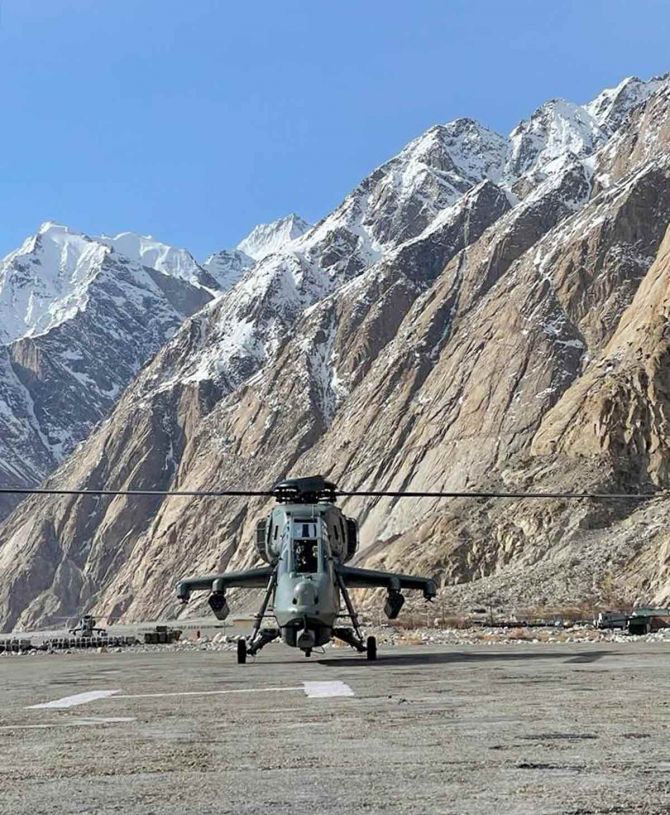
Although the operation began in 1984, IAF helicopters were already operating at the Siachen Glacier since 1978, flying Chetak helicopters which was the first IAF helicopter to land in the glacier in October 1978. All photographs: ANI Photo
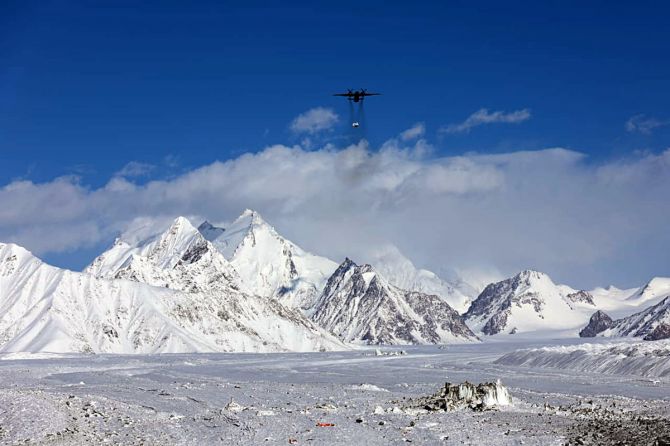
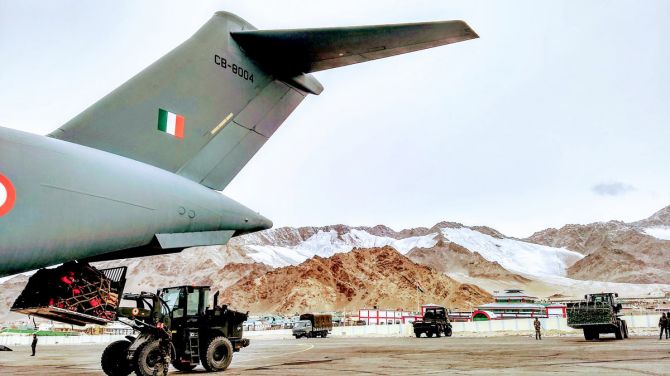

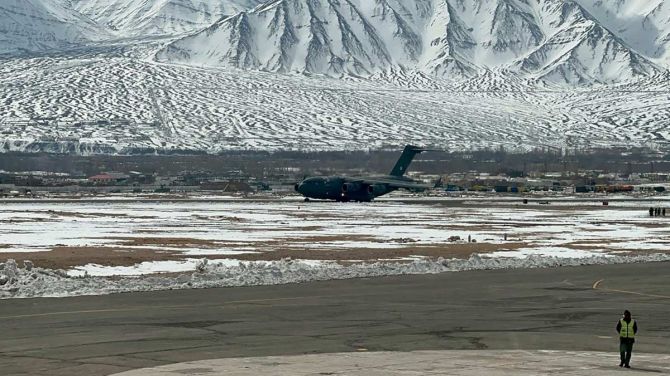
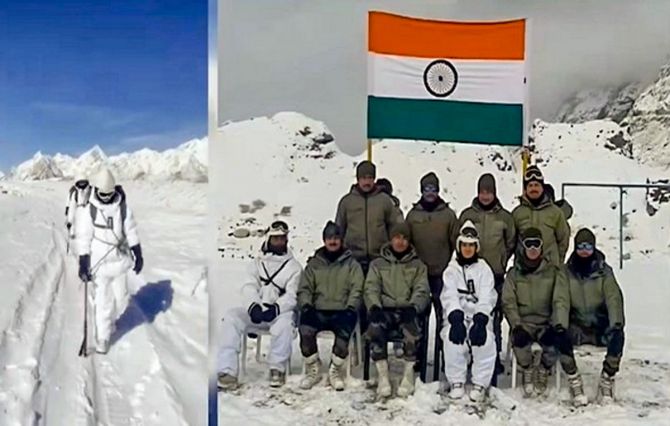
Playing an "irreplaceable role" in this effort, IAF's tactical and strategic airlifters, the AN-12s, AN-32s and IL-76s transported stores and troops and air-dropped supplies to high altitude airfields, from where Mi-17, Mi-8, Chetak and Cheetah helicopters "ferried men and material to dizzying heights on the glacier, far above the limits set by the helicopter manufacturers," a senior IAF officer told PTI.
While the initial operations involved only the use of transport and helicopter aircraft transporting men and material, the IAF gradually expanded its role and presence in the region with the deployment of fighter aircraft as well.
The officer acknowledging the role of the IAF in Siachen in the past few decades, said, "flying in such ruthless terrain, records of human endurance, flying and technical proficiency" are being set by it nearly every day.
Operation Meghdoot involved the airlifting of Indian Army soldiers by the IAF and dropping them on the glacial peaks.
"Although the operation began in 1984, IAF helicopters were already operating in the Siachen glacier since 1978, flying the Chetak helicopters which was the first IAF helicopter to land in the glacier in October 1978," the senior IAF officer told PTI.
By 1984, Pakistan's "cartographic aggression in the uncharted territory of Ladakh", allowing foreign mountaineering expeditions in Siachen, was becoming a "cause of concern", IAF officers said.
Having received intelligence inputs about an impending Pakistani military action in the area, India decided to "thwart Pakistan's efforts to legitimise its claim on Siachen," they said.
The Indian Army launched Operation Meghdoot to secure strategic heights in Siachen with the deployment of troops.
Soon, about 300-odd troops were positioned on the strategically important peaks and passes of the glacier.
By the time the Pakistan army reacted by advancing its own troops, the Indian Army was occupying strategically crucial mountain peaks and passes, thereby gaining a tactical advantage, the officials said.
In extending valuable support to the army's fight for maintaining military dominance on this desolate glacier since April 1984, "the IAF's incredible performance at the extremes of temperature and altitude remains a continuing saga of fortitude and skill," the senior official added.
In the highest battlefield in the world, known for its extreme climatic conditions, IAF helicopters form the lifeline and the sole link of Indian troops with the outside world, playing a critical role in continuing the four-decade-old military operation, responding to emergencies, supplying essential logistics and evacuating the sick and wounded from the 78 km-long glacier, the officials said.
The IAF's Hunter aircraft kick-started fighter operations from the high-altitude airfield at Leh when a detachment of Hunters from the No. 27 Squadron commenced operations in September 1984, according to the IAF.
In the next couple of years, the Hunters flew "an impressive total of more than 700 sorties from Leh".
"As an increasingly large number of fighter sweeps and simulated strikes began to be carried out over the glacier itself, it served as the ultimate morale booster for Indian troops deployed on the glacier, and sent a stern message to the adversary to avoid any misadventures in the area," the IAF officer said.
Later, live armament sorties were carried out at the high-altitude firing range at Kar Tso, south of Leh. With the ground infrastructure becoming more conducive for fighter flying, MiG-23s and MiG-29s also started operating from Leh and Thoise.
The IAF also inducted the Cheetal helicopters for operating in the glacier in 2009. The Cheetal is a Cheetah helicopter that is re-engineered with a TM 333 2M2 engine having better reliability and load-carrying capability at high altitudes, it said.
On August 20, 2013, in a significant show of capability, the IAF landed one of its key acquisitions, the Lockheed Martin C-130J Super Hercules four-engine transport aircraft at Daulat Beg Oldie, the world's highest airstrip, near the Line of Actual Control in Ladakh, the IAF added.
Today, nearly all the aircraft of the IAF including the Rafale, the Su-30MKI, the Chinook, the Apache, Advanced Light Helicopter Mk III & Mk IV, the Light Combat Helicopter Prachand, the MiG-29, the Mirage-2000, C-17 , C-130 J, IL-76 and An-32 operate in the area.
Photographs curated by Anant Salvi/Rediff.com
Feature Presentation: Mahipal Soni/Rediff.com











